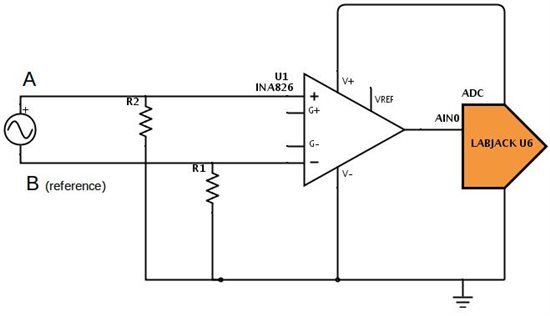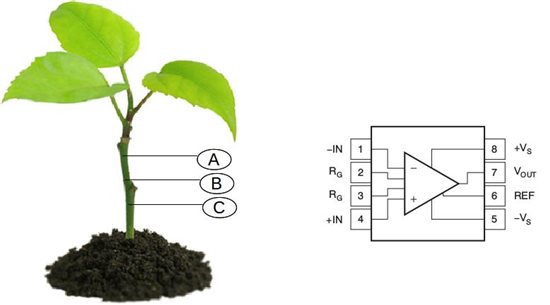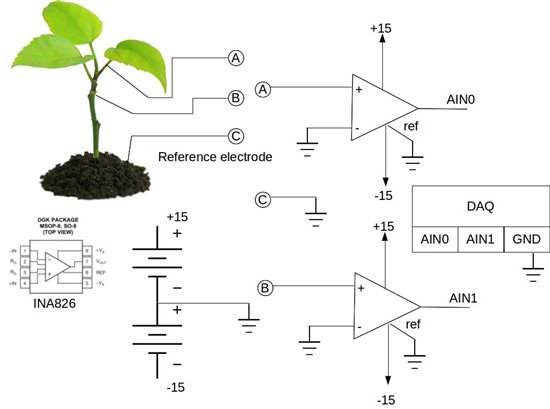Hello,
we are working in a project to record plant electrical activity e.g. http://www.ncbi.nlm.nih.gov/pmc/articles/PMC158572/
Ideally, this should be similar to ECG, provided that the characteristics of the electrical signals generated by plants are not yet clear and iare likely not quasi-periodic as in ECG. However, as a starting point we are experimenting with "standard" instrumentation amplifiers for ECG.
In particular we are now experimenting with the INA826 and a basic version of the ECG schematics in figure 67 of the datasheet.
First of all I would really appreciate any sugestion on possible alternative solutions (e.g. te INA 333), then I have few very basic questions:
1) Provided that we are not now worried about possible injuries to the plant, Can we remove all the capacitors and resistance from the electrodes to the inputs of the INA 826?
2) Can we also remove the RL driven circuitary? In this case, where should we connect the Refernce Electrode?
3) In the first version, just to have a rough idea of the signal, I think we can also remove the integrating amplifier used to remove the DC offset ... we can plug it later to improve the quality of the signal
With 1,2 and 3 in place, we should have a very basic configuration to start our invetigation. Do you consider it a good starting point?
Finally another clarification. In the datasheets of the instrumentation amplifiers, it is always suggested to connect both the inputs to the ground with two proper resistors (one for each channel) to provide a return path for the current bias. However, in almost all the schematics for ECG I checked out I saw such resistors only very few time. Why?
Thanks in advance, Andrea










